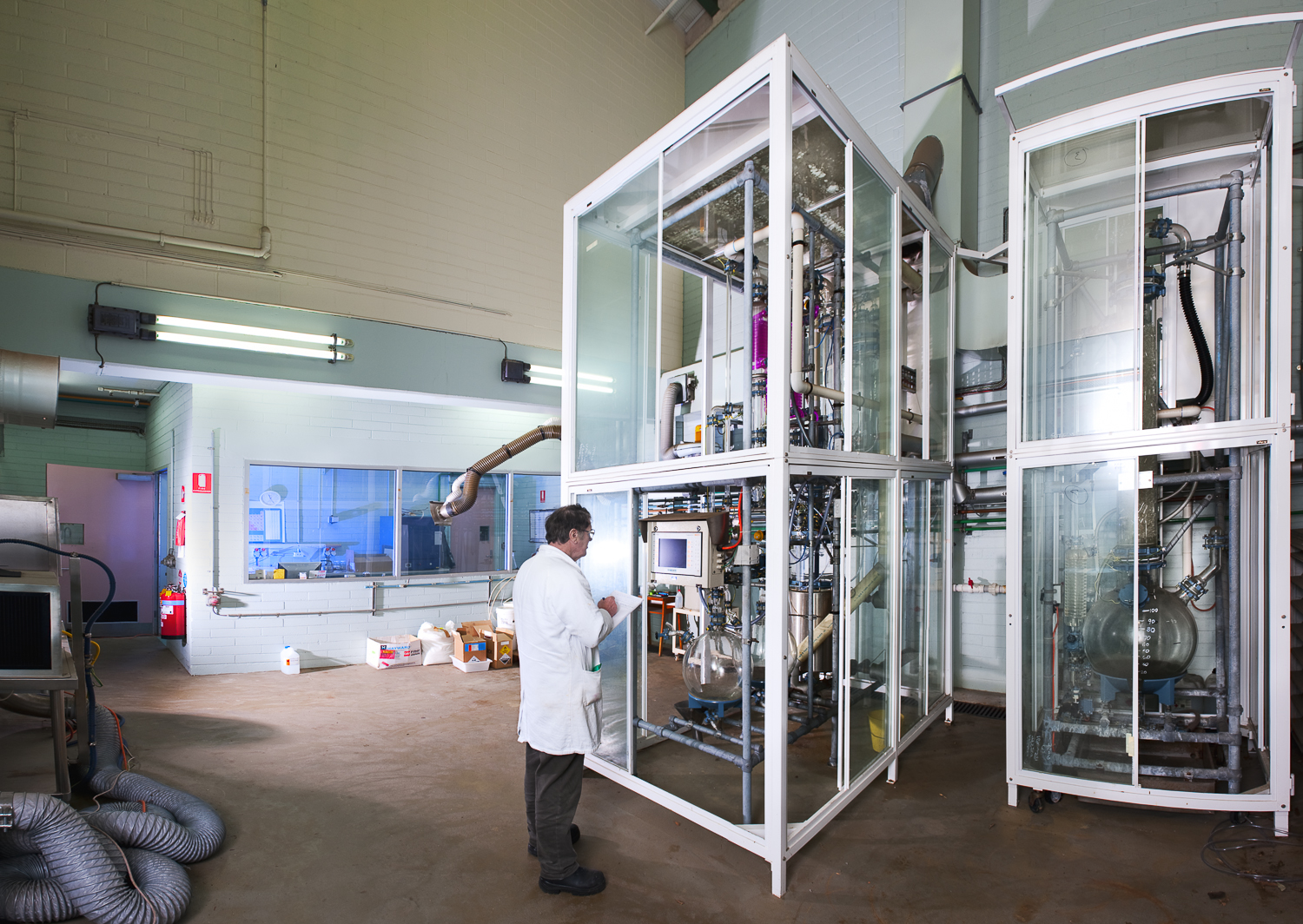
CSIRO
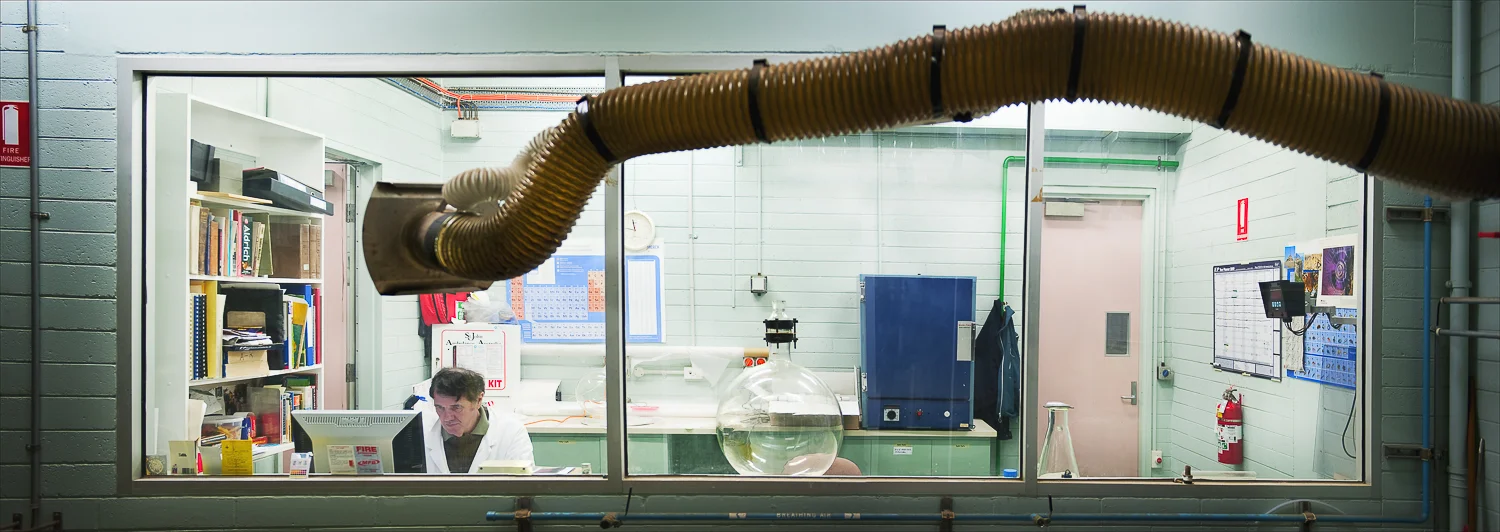
CSIRO
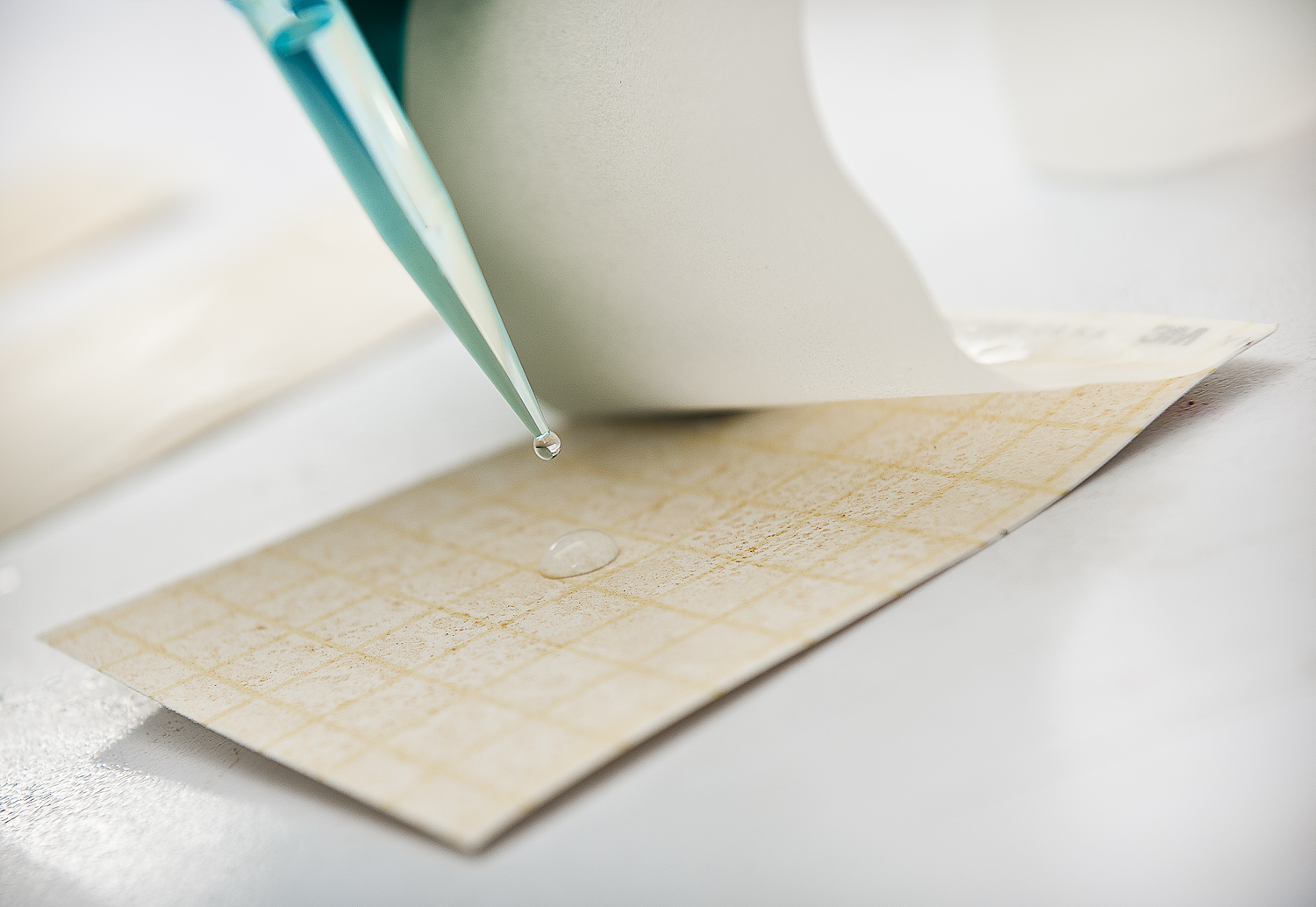
CSIRO

Boeing Defence and Technology Australia
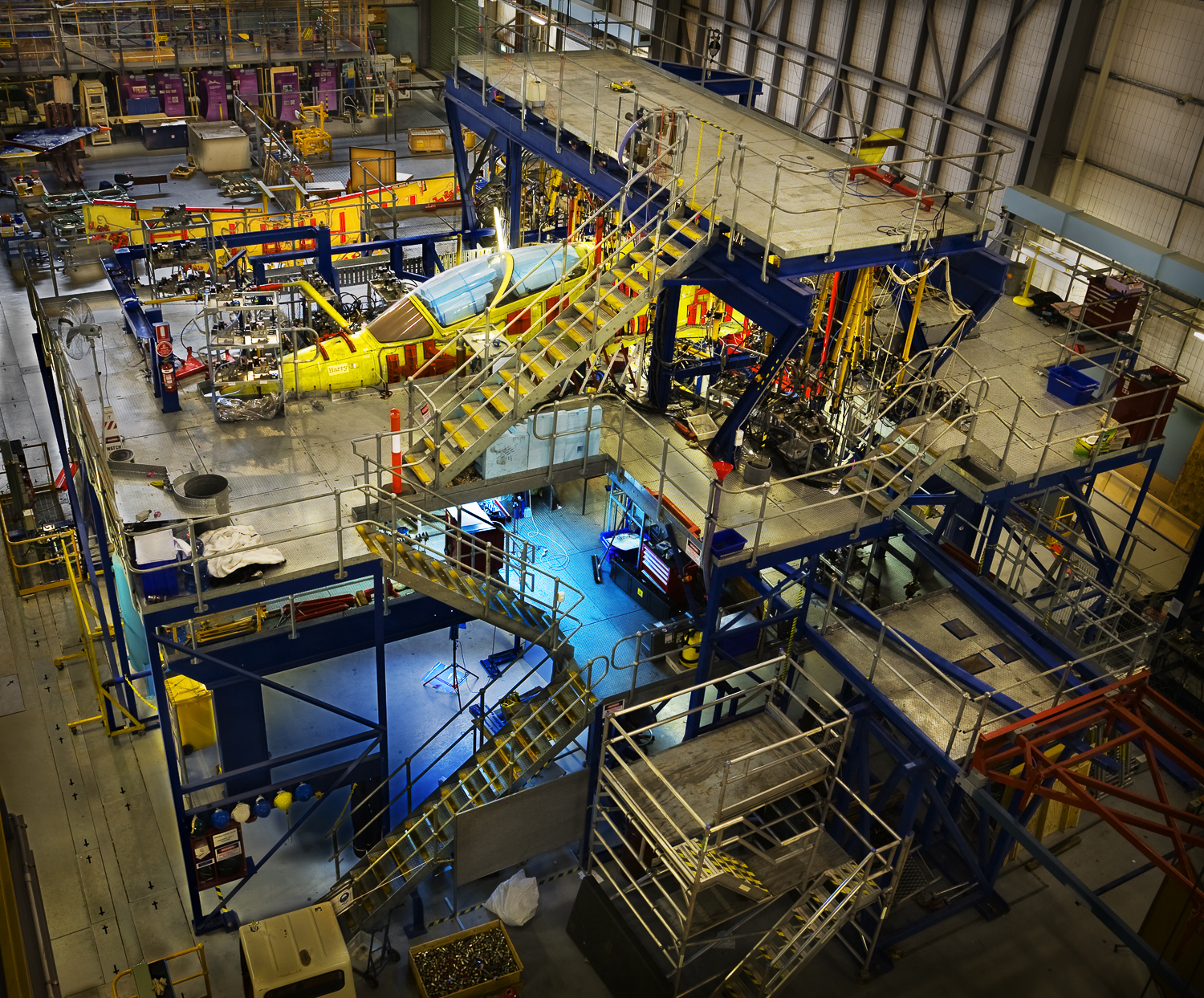
Boeing Defence and Technology Australia
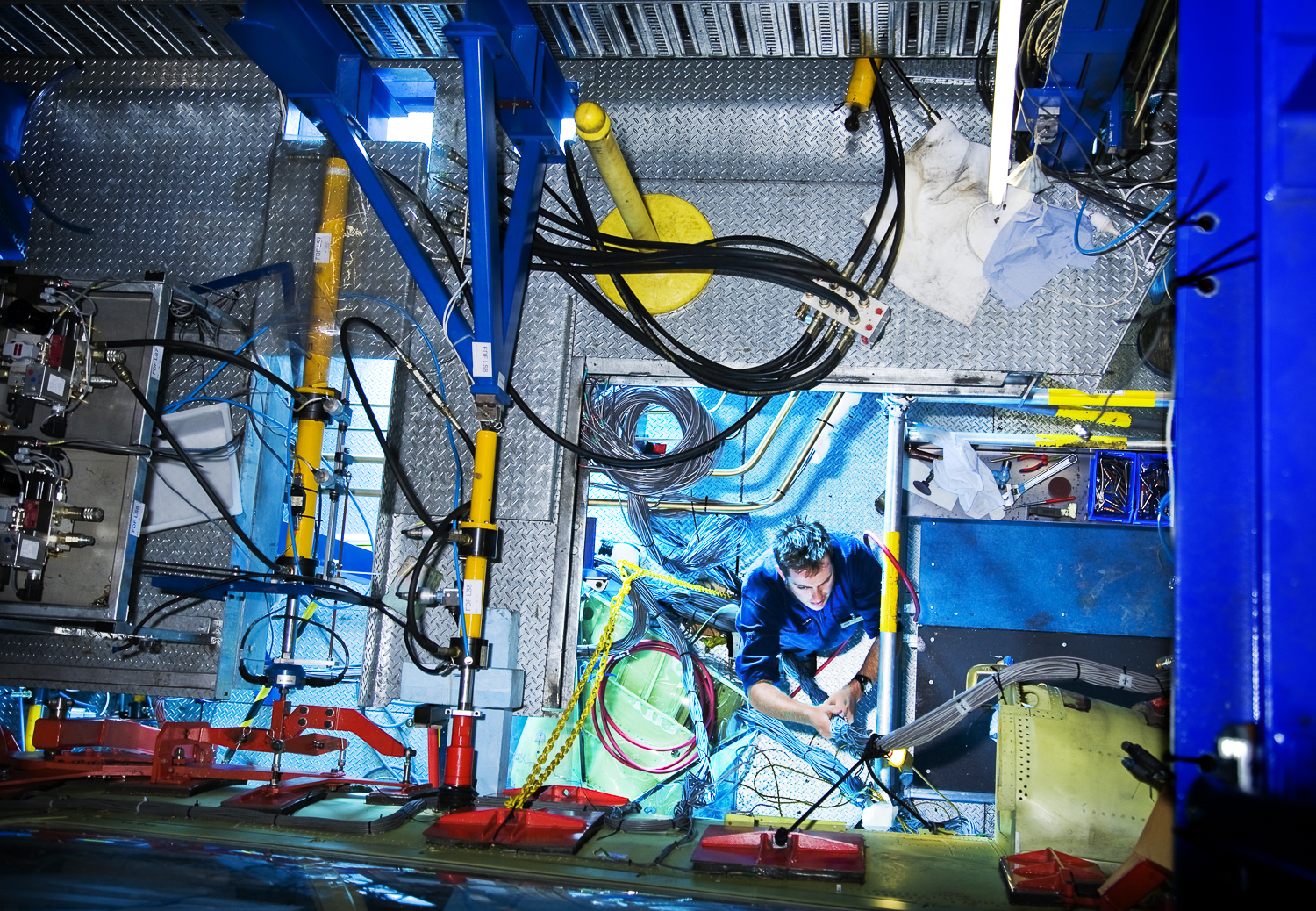
Boeing Defence and Technology Australia
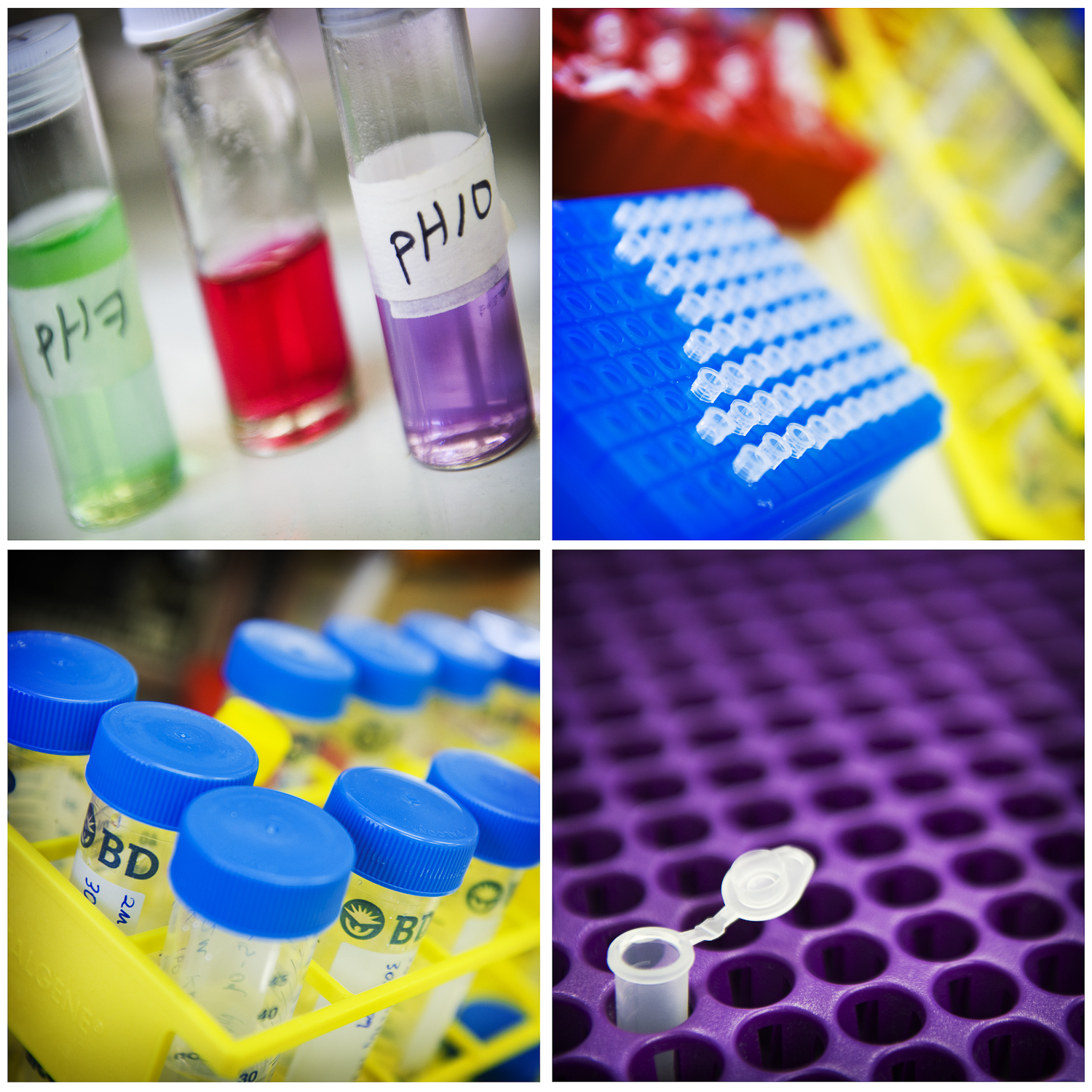
CSIRO
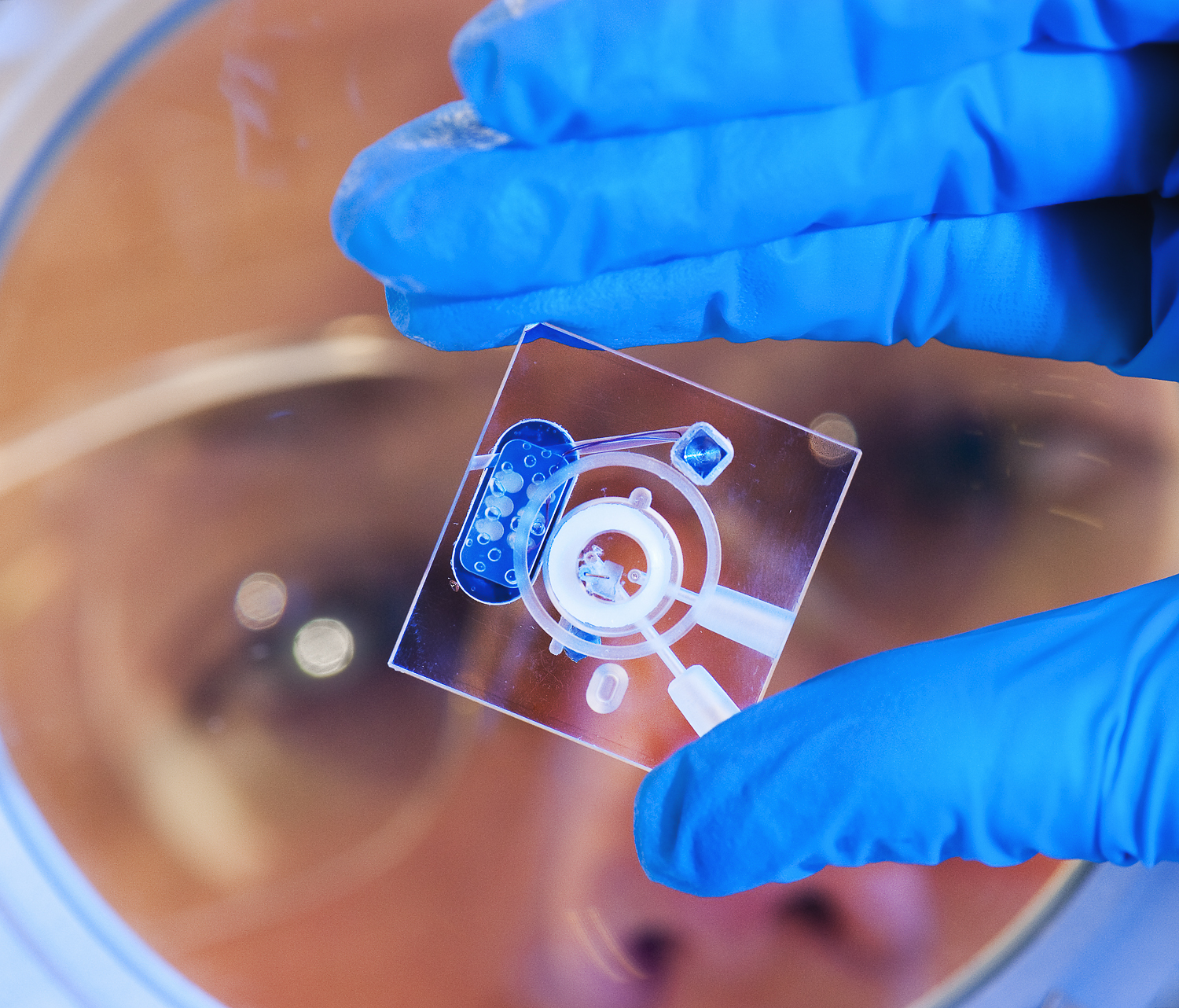
CSIRO
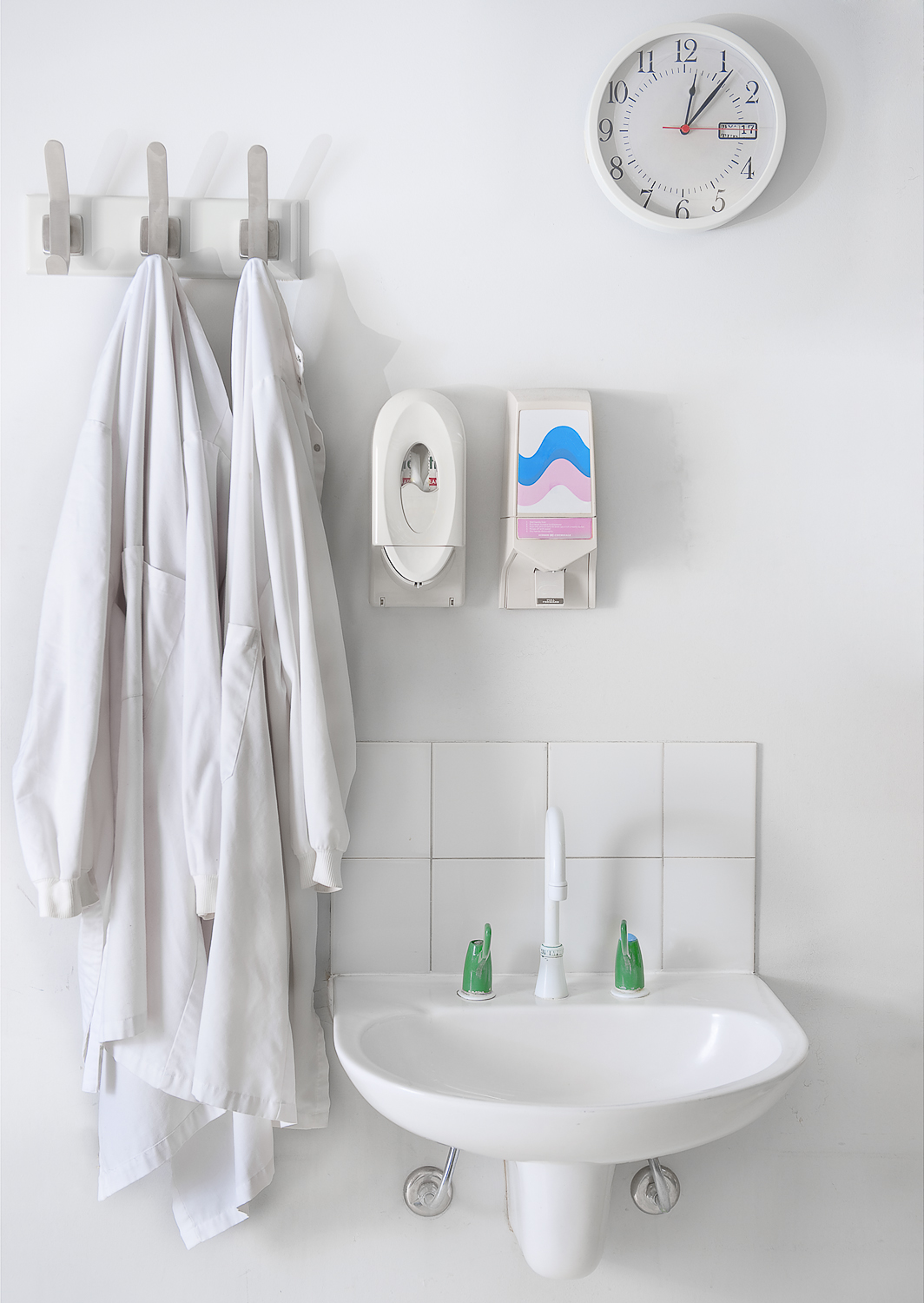
CSIRO
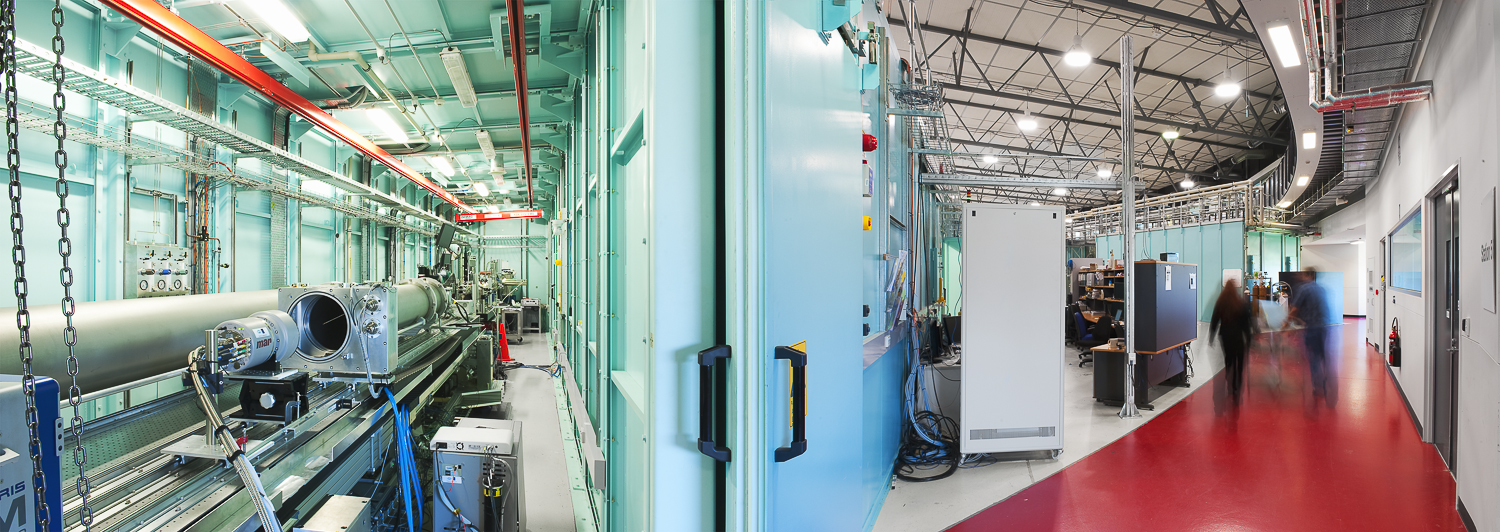
Autralian Synchrotron, Clayton

Australian Synchrotron, Clayton
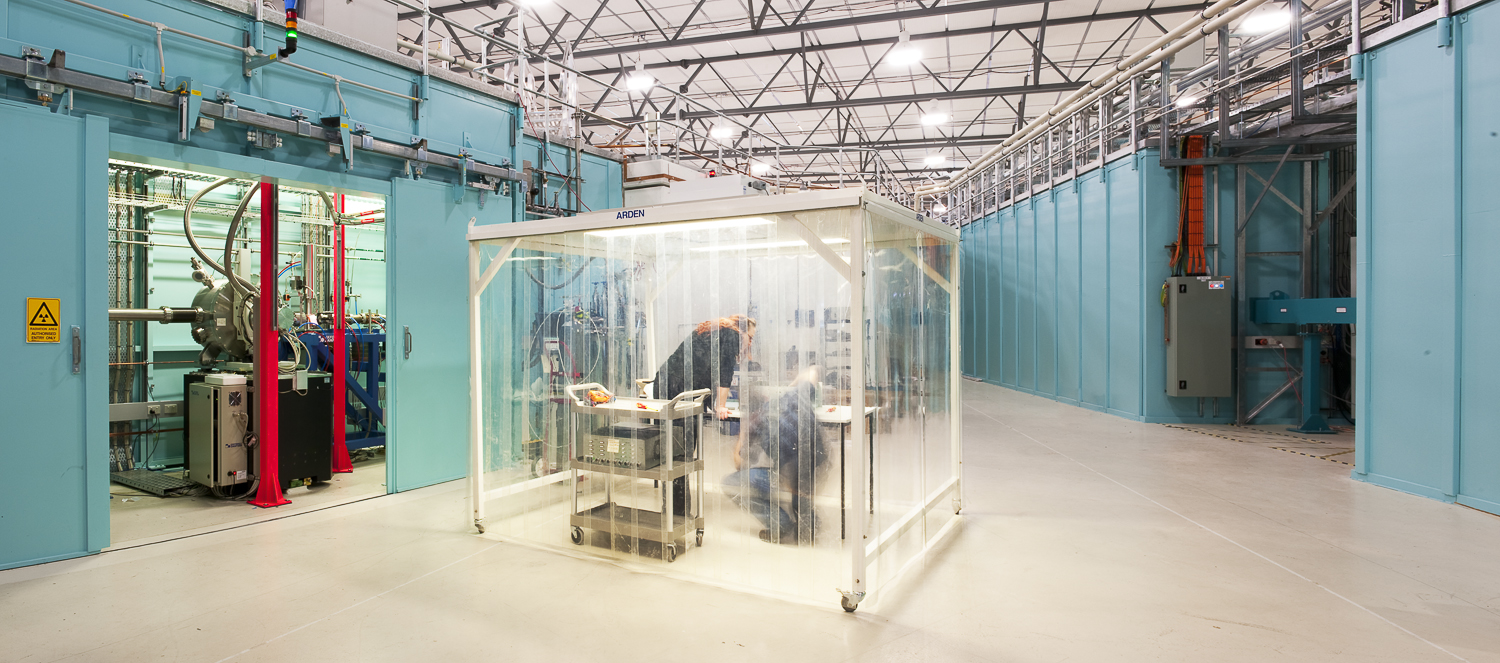
Australian Synchrotron, Clayton
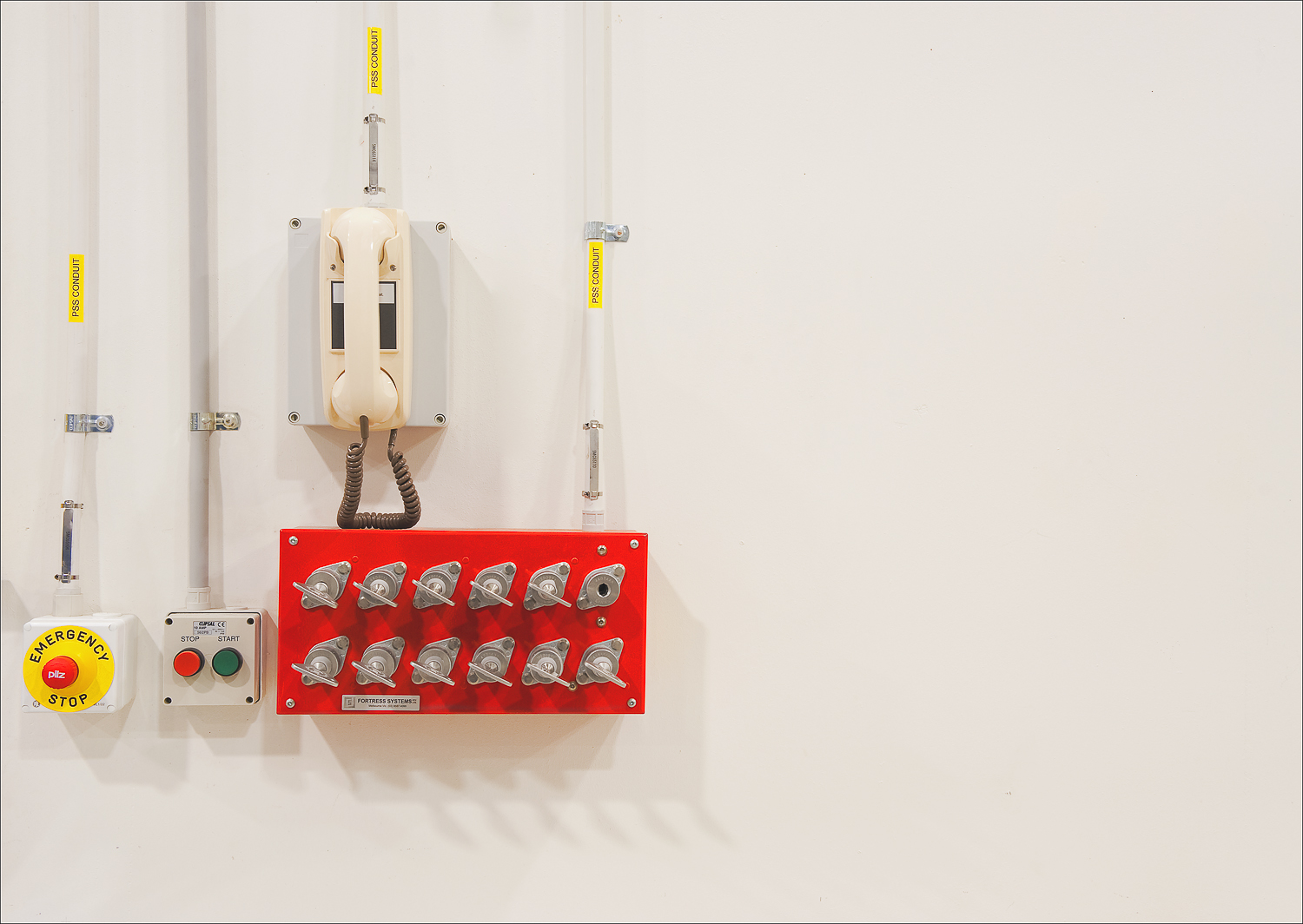
Australian Synchrotron, Clayton

CSIROThe Commonwealth Scientific and Industrial Research Organisation (CSIRO) is the federal government agency for scientific research in Australia. Its chief role is to improve the economic and social performance of industry, for the benefit of the community. CSIRO works with leading organisations around the world, and CSIRO Publishing issues journals with the latest research by leading scientists on a broad range of subjects.Notable developments by CSIRO have included the invention of atomic absorption spectroscopy, development of the first commercially successful polymer banknote, the invention of the insect repellent in Aerogard and the introduction of a series of biological controls into Australia, such as the introduction of myxomatosis and rabbit calicivirus for the control of rabbit populations. From its headquarters in Canberra, CSIRO maintains more than 50 sites across Australia and biological control research stations in France and Mexico, employing about 5000 in total. The primary roles of CSIRO include contributing to meeting the objectives and responsibilities of the Australian government and providing new ways to benefit the Australian community and the economic and social performance of a number of industry sectors through research and development. CSIRO works with leading organisations around the world, and CSIRO Publishing publishes journals presenting the latest research by leading Australian and overseas scientists and covering a broad range of subjects.As of 1 July 2014, CSIRO is governed by a Board, chaired by David Thodey with nine directors inclusive of the CEO, all appointed by the Australian government. Daily management is led by a CEO, presently Dr Larry Marshall, with an executive team of seven. There are ten research flagships and twelve services areas. A precursor to CSIRO, the Advisory Council of Science and Industry, was established in 1916 at the initiative of prime minister Billy Hughes. However, the Advisory Council struggled with insufficient funding during the First World War. In 1920 the Council was renamed the "Commonwealth Institute of Science and Industry", and was led by George Handley Knibbs (1921–26), but continued to struggle financially.In 1926 The Science and Industry Research Act replaced the Institute with the 'Council for Scientific and Industrial Research' (CSIR). The CSIR was structured to represent the federal structure of Australian government, and had state-level committees and a central council. As well as this improved structure, the CSIR benefited from strong bureaucratic management under George Julius, David Rivett, and Arnold Richardson. CSIR research focussed on primary and secondary industries. Early in its existence, it established divisions studying animal health and animal nutrition. After the depression, the CSIR extended into secondary industries such as manufacturing.CSIRO today has expanded into a wider range of scientific inquiry. This expansion began with the evolution of CSIR to the CSIRO by the Ben Chifley Labor government in 1949 which amended the Science and Industry Research Act,[15] under which CSIRO continues to operate. The amendment enlarged and reconstituted the organisation and its administrative structure. Under Ian Clunies Ross as chairman, CSIRO pursued new areas such as radioastronomy and industrial chemistry. Stewart Donn Photography.A Melbourne based photographer specialising in all Corporate, Commercial, Advertising, Industrial and Product photography. Specialising in this type of photography allows Stewart to make complicated corporate and industrial scenes, and the people in these scenes, look heroic, interesting and beautiful.Based in Melbourne’s Western suburbs.Stewart has worked and is comfortable working with, small one to five man companies such as Fundere Artist Foundry in Footscray, through to larger companies such as the Melbourne Convention & Exhibition Centre, Museum Victoria, and Energy Power Systems Australia, and has also worked with Agency’s such as Badjar Ogilvy, One20 and DT Digital.

CSIROThe Commonwealth Scientific and Industrial Research Organisation (CSIRO) is the federal government agency for scientific research in Australia. Its chief role is to improve the economic and social performance of industry, for the benefit of the community. CSIRO works with leading organisations around the world, and CSIRO Publishing issues journals with the latest research by leading scientists on a broad range of subjects.Notable developments by CSIRO have included the invention of atomic absorption spectroscopy, development of the first commercially successful polymer banknote, the invention of the insect repellent in Aerogard and the introduction of a series of biological controls into Australia, such as the introduction of myxomatosis and rabbit calicivirus for the control of rabbit populations. From its headquarters in Canberra, CSIRO maintains more than 50 sites across Australia and biological control research stations in France and Mexico, employing about 5000 in total. The primary roles of CSIRO include contributing to meeting the objectives and responsibilities of the Australian government and providing new ways to benefit the Australian community and the economic and social performance of a number of industry sectors through research and development. CSIRO works with leading organisations around the world, and CSIRO Publishing publishes journals presenting the latest research by leading Australian and overseas scientists and covering a broad range of subjects.As of 1 July 2014, CSIRO is governed by a Board, chaired by David Thodey with nine directors inclusive of the CEO, all appointed by the Australian government. Daily management is led by a CEO, presently Dr Larry Marshall, with an executive team of seven. There are ten research flagships and twelve services areas. A precursor to CSIRO, the Advisory Council of Science and Industry, was established in 1916 at the initiative of prime minister Billy Hughes. However, the Advisory Council struggled with insufficient funding during the First World War. In 1920 the Council was renamed the "Commonwealth Institute of Science and Industry", and was led by George Handley Knibbs (1921–26), but continued to struggle financially.In 1926 The Science and Industry Research Act replaced the Institute with the 'Council for Scientific and Industrial Research' (CSIR). The CSIR was structured to represent the federal structure of Australian government, and had state-level committees and a central council. As well as this improved structure, the CSIR benefited from strong bureaucratic management under George Julius, David Rivett, and Arnold Richardson. CSIR research focussed on primary and secondary industries. Early in its existence, it established divisions studying animal health and animal nutrition. After the depression, the CSIR extended into secondary industries such as manufacturing.CSIRO today has expanded into a wider range of scientific inquiry. This expansion began with the evolution of CSIR to the CSIRO by the Ben Chifley Labor government in 1949 which amended the Science and Industry Research Act,[15] under which CSIRO continues to operate. The amendment enlarged and reconstituted the organisation and its administrative structure. Under Ian Clunies Ross as chairman, CSIRO pursued new areas such as radioastronomy and industrial chemistry. Stewart Donn Photography.A Melbourne based photographer specialising in all Corporate, Commercial, Advertising, Industrial and Product photography. Specialising in this type of photography allows Stewart to make complicated corporate and industrial scenes, and the people in these scenes, look heroic, interesting and beautiful.Based in Melbourne’s Western suburbs.Stewart has worked and is comfortable working with, small one to five man companies such as Fundere Artist Foundry in Footscray, through to larger companies such as the Melbourne Convention & Exhibition Centre, Museum Victoria, and Energy Power Systems Australia, and has also worked with Agency’s such as Badjar Ogilvy, One20 and DT Digital.

CSIROThe Commonwealth Scientific and Industrial Research Organisation (CSIRO) is the federal government agency for scientific research in Australia. Its chief role is to improve the economic and social performance of industry, for the benefit of the community. CSIRO works with leading organisations around the world, and CSIRO Publishing issues journals with the latest research by leading scientists on a broad range of subjects.Notable developments by CSIRO have included the invention of atomic absorption spectroscopy, development of the first commercially successful polymer banknote, the invention of the insect repellent in Aerogard and the introduction of a series of biological controls into Australia, such as the introduction of myxomatosis and rabbit calicivirus for the control of rabbit populations. From its headquarters in Canberra, CSIRO maintains more than 50 sites across Australia and biological control research stations in France and Mexico, employing about 5000 in total. The primary roles of CSIRO include contributing to meeting the objectives and responsibilities of the Australian government and providing new ways to benefit the Australian community and the economic and social performance of a number of industry sectors through research and development. CSIRO works with leading organisations around the world, and CSIRO Publishing publishes journals presenting the latest research by leading Australian and overseas scientists and covering a broad range of subjects.As of 1 July 2014, CSIRO is governed by a Board, chaired by David Thodey with nine directors inclusive of the CEO, all appointed by the Australian government. Daily management is led by a CEO, presently Dr Larry Marshall, with an executive team of seven. There are ten research flagships and twelve services areas. A precursor to CSIRO, the Advisory Council of Science and Industry, was established in 1916 at the initiative of prime minister Billy Hughes. However, the Advisory Council struggled with insufficient funding during the First World War. In 1920 the Council was renamed the "Commonwealth Institute of Science and Industry", and was led by George Handley Knibbs (1921–26), but continued to struggle financially.In 1926 The Science and Industry Research Act replaced the Institute with the 'Council for Scientific and Industrial Research' (CSIR). The CSIR was structured to represent the federal structure of Australian government, and had state-level committees and a central council. As well as this improved structure, the CSIR benefited from strong bureaucratic management under George Julius, David Rivett, and Arnold Richardson. CSIR research focussed on primary and secondary industries. Early in its existence, it established divisions studying animal health and animal nutrition. After the depression, the CSIR extended into secondary industries such as manufacturing.CSIRO today has expanded into a wider range of scientific inquiry. This expansion began with the evolution of CSIR to the CSIRO by the Ben Chifley Labor government in 1949 which amended the Science and Industry Research Act,[15] under which CSIRO continues to operate. The amendment enlarged and reconstituted the organisation and its administrative structure. Under Ian Clunies Ross as chairman, CSIRO pursued new areas such as radioastronomy and industrial chemistry. Stewart Donn Photography.A Melbourne based photographer specialising in all Corporate, Commercial, Advertising, Industrial and Product photography. Specialising in this type of photography allows Stewart to make complicated corporate and industrial scenes, and the people in these scenes, look heroic, interesting and beautiful.Based in Melbourne’s Western suburbs.Stewart has worked and is comfortable working with, small one to five man companies such as Fundere Artist Foundry in Footscray, through to larger companies such as the Melbourne Convention & Exhibition Centre, Museum Victoria, and Energy Power Systems Australia, and has also worked with Agency’s such as Badjar Ogilvy, One20 and DT Digital.

Boeing Defence and Technology AustraliaBoeing Australia Holdings Pty Ltd, or simply Boeing Australia, is Boeing's largest footprint outside the United States. Established in 2002, the company oversees its seven wholly owned subsidiaries, consolidating and co-ordinating Boeing’s businesses and operations in Australia.Boeing has played a role in Australia’s aerospace industry through its products and services, and has 3500 employees spread across 28 locations in every state and territory except Tasmania. With an investment of more than $800 million, Boeing generates approximately $400 million in export revenue for Australia through its commercial and defence products and services. Boeing began working in Australia through its subsidiary Boeing Aerostructures Australia, which was formerly known as de Havilland Australia and established in 1927. Boeing acquired de Havilland Australia in 2000, and prior to this Boeing’s first direct investment in Australia came through its acquisition of the Rockwell International in 1996. Rockwell Australia became Boeing Australia Ltd (now Boeing Defence Australia) in 1996.[3]The five remaining subsidiaries were acquired as follows: Jeppesen Australia and Jeppesen Marine in 2000, Alteon in 2002, Aviall in 2006 and Insitu Pacific in 2009. In Australia, IDS is represented in by its business unit Boeing Defence Australia (BDA), which is a defence aerospace enterprise. BDA supports some of the largest and most complex programs for the Commonwealth of Australia, the Australian Defence Force and commercial customers. BDA also conducts operations and maintenance for classified programs and Australian Government sites, and operates in line with the three divisions of Boeing IDS - Boeing Military Aircraft, Global Services & Support, and Network & Space Systems.Other IDS activities in Australia are carried out by Boeing Australia Component Repairs (BACR) and Boeing Aerostructures Australia (BAA). BACR provides maintenance, repair and overhaul (MRO) on composite and metallic structures, and BAA offers design, manufacture, testing and repair of airframe structural components. Despite predominantly commercial customers, BAA is responsible for the manufacture of the F/A-18 C/D trailing-edge flaps, while BACR provides MRO services as needed.Boeing Commercial Airplanes[edit]Boeing Commercial Airplanes (BCA) is a manufacturer of commercial planes. In Australia, BCA is represented by BCA Sales, which operates out of Boeing Australia’s Sydney office and provides sales and marketing support of BCA products, customer engineering and quality control/procurement functions.BCA opened its first Australian office in Sydney in 1959 when Qantas became the first international customer for Boeing’s first passenger jet, the 707, which changed air travel for Australians by drastically reducing flight times to the rest of the world. The Boeing 737 has also played an important role in the growth of aviation in Australia.BCA is also supported in Australia by Boeing Aerostructures Australia (BAA, formerly Hawker de Havilland). BAA manufactures aircraft components including the use of composite carbon fibre technology. BAA won the sole-source contract for designing and manufacturing the moveable trailing edges on the Boeing 787 Dreamliner.Another component of BCA is its Commercial Aviation Services (CAS) unit, which provides materials and engineering services and solutions to Boeing customers in-country. In Australia, Alteon Training Australia, Aviall, Jeppesen Australia and Jeppesen Marine come under CAS' family of companies.Boeing Field Service is also part of CAS. Field Service provides on-site technical advice to Boeing customers and can call resolve operator problems with access to BCA technical resources. Field Service representatives are located in Brisbane, Sydney and Melbourne. Boeing Research and Technology[edit]In March 2008, Boeing established a branch of its advanced research and development (R&D) unit – Boeing Research & Technology (BR&T) – in Australia to provide an R&D organisation for its in-country businesses and to collaborate with Australian R&D organisations, including universities and private sector R&D providers, the Commonwealth Scientific and Industrial Research Organisation (CSIRO) and the Defence Science and Technology Organisation (DSTO).Current areas of BR&T research includes unmanned systems research, the manufacture of advanced composite components, and biofuels.In September 2003, Boeing Company initiated with the University of Queensland School of IT and Electrical Engineering (ITEE) a new Boeing Systems Engineering Teaching Laboratory to fill skills shortages in aviation and aerospace industry in Australia. [8] Boeing also made a $1.55M grant for founding of a Boeing Professorship in Systems Engineering for 5 years occupied by Prof Peter A Lindsay. Boeing provided funding with respect to the Wedgetail 737 Airborne Early Warning and Control (AEW&C) project with the Commonwealth of Australia and expected to deliver 2 by 2006.This fostered Defence Industries Queensland in Queensland Department of State Development, Infrastructure and Planning with Boeing Defence Australia at RAAF Base Amberley.Company affairs[edit]President Boeing Australia and South Pacific[edit]Ian Thomas is the President Boeing Australia and South Pacific. He was appointed to the role in March 2009, and is responsible as a figurehead to Boeing's activities in the region. Previously, Thomas was president of Boeing India since January 2007. He replaced former president of Boeing Australia and South Pacific Craig Saddler, who returned to the US to accept the position of chief financial officer for Boeing Integrated Defense Systems division, Network & Space Systems. Prior to Saddler, Andrew Peacock, a former Australian Liberal politician, held the role. Stewart Donn Photography.A Melbourne based photographer specialising in all Corporate, Commercial, Advertising, Industrial and Product photography. Specialising in this type of photography allows Stewart to make complicated corporate and industrial scenes, and the people in these scenes, look heroic, interesting and beautiful.Based in Melbourne’s Western suburbs.Stewart has worked and is comfortable working with, small one to five man companies such as Fundere Artist Foundry in Footscray, through to larger companies such as the Melbourne Convention & Exhibition Centre, Museum Victoria, and Energy Power Systems Australia, and has also worked with Agency’s such as Badjar Ogilvy, One20 and DT Digital.

Boeing Defence and Technology AustraliaBoeing Australia Holdings Pty Ltd, or simply Boeing Australia, is Boeing's largest footprint outside the United States. Established in 2002, the company oversees its seven wholly owned subsidiaries, consolidating and co-ordinating Boeing’s businesses and operations in Australia.Boeing has played a role in Australia’s aerospace industry through its products and services, and has 3500 employees spread across 28 locations in every state and territory except Tasmania. With an investment of more than $800 million, Boeing generates approximately $400 million in export revenue for Australia through its commercial and defence products and services. Boeing began working in Australia through its subsidiary Boeing Aerostructures Australia, which was formerly known as de Havilland Australia and established in 1927. Boeing acquired de Havilland Australia in 2000, and prior to this Boeing’s first direct investment in Australia came through its acquisition of the Rockwell International in 1996. Rockwell Australia became Boeing Australia Ltd (now Boeing Defence Australia) in 1996.[3]The five remaining subsidiaries were acquired as follows: Jeppesen Australia and Jeppesen Marine in 2000, Alteon in 2002, Aviall in 2006 and Insitu Pacific in 2009. In Australia, IDS is represented in by its business unit Boeing Defence Australia (BDA), which is a defence aerospace enterprise. BDA supports some of the largest and most complex programs for the Commonwealth of Australia, the Australian Defence Force and commercial customers. BDA also conducts operations and maintenance for classified programs and Australian Government sites, and operates in line with the three divisions of Boeing IDS - Boeing Military Aircraft, Global Services & Support, and Network & Space Systems.Other IDS activities in Australia are carried out by Boeing Australia Component Repairs (BACR) and Boeing Aerostructures Australia (BAA). BACR provides maintenance, repair and overhaul (MRO) on composite and metallic structures, and BAA offers design, manufacture, testing and repair of airframe structural components. Despite predominantly commercial customers, BAA is responsible for the manufacture of the F/A-18 C/D trailing-edge flaps, while BACR provides MRO services as needed.Boeing Commercial Airplanes[edit]Boeing Commercial Airplanes (BCA) is a manufacturer of commercial planes. In Australia, BCA is represented by BCA Sales, which operates out of Boeing Australia’s Sydney office and provides sales and marketing support of BCA products, customer engineering and quality control/procurement functions.BCA opened its first Australian office in Sydney in 1959 when Qantas became the first international customer for Boeing’s first passenger jet, the 707, which changed air travel for Australians by drastically reducing flight times to the rest of the world. The Boeing 737 has also played an important role in the growth of aviation in Australia.BCA is also supported in Australia by Boeing Aerostructures Australia (BAA, formerly Hawker de Havilland). BAA manufactures aircraft components including the use of composite carbon fibre technology. BAA won the sole-source contract for designing and manufacturing the moveable trailing edges on the Boeing 787 Dreamliner.Another component of BCA is its Commercial Aviation Services (CAS) unit, which provides materials and engineering services and solutions to Boeing customers in-country. In Australia, Alteon Training Australia, Aviall, Jeppesen Australia and Jeppesen Marine come under CAS' family of companies.Boeing Field Service is also part of CAS. Field Service provides on-site technical advice to Boeing customers and can call resolve operator problems with access to BCA technical resources. Field Service representatives are located in Brisbane, Sydney and Melbourne. Boeing Research and Technology[edit]In March 2008, Boeing established a branch of its advanced research and development (R&D) unit – Boeing Research & Technology (BR&T) – in Australia to provide an R&D organisation for its in-country businesses and to collaborate with Australian R&D organisations, including universities and private sector R&D providers, the Commonwealth Scientific and Industrial Research Organisation (CSIRO) and the Defence Science and Technology Organisation (DSTO).Current areas of BR&T research includes unmanned systems research, the manufacture of advanced composite components, and biofuels.In September 2003, Boeing Company initiated with the University of Queensland School of IT and Electrical Engineering (ITEE) a new Boeing Systems Engineering Teaching Laboratory to fill skills shortages in aviation and aerospace industry in Australia. [8] Boeing also made a $1.55M grant for founding of a Boeing Professorship in Systems Engineering for 5 years occupied by Prof Peter A Lindsay. Boeing provided funding with respect to the Wedgetail 737 Airborne Early Warning and Control (AEW&C) project with the Commonwealth of Australia and expected to deliver 2 by 2006.This fostered Defence Industries Queensland in Queensland Department of State Development, Infrastructure and Planning with Boeing Defence Australia at RAAF Base Amberley.Company affairs[edit]President Boeing Australia and South Pacific[edit]Ian Thomas is the President Boeing Australia and South Pacific. He was appointed to the role in March 2009, and is responsible as a figurehead to Boeing's activities in the region. Previously, Thomas was president of Boeing India since January 2007. He replaced former president of Boeing Australia and South Pacific Craig Saddler, who returned to the US to accept the position of chief financial officer for Boeing Integrated Defense Systems division, Network & Space Systems. Prior to Saddler, Andrew Peacock, a former Australian Liberal politician, held the role. Stewart Donn Photography.A Melbourne based photographer specialising in all Corporate, Commercial, Advertising, Industrial and Product photography. Specialising in this type of photography allows Stewart to make complicated corporate and industrial scenes, and the people in these scenes, look heroic, interesting and beautiful.Based in Melbourne’s Western suburbs.Stewart has worked and is comfortable working with, small one to five man companies such as Fundere Artist Foundry in Footscray, through to larger companies such as the Melbourne Convention & Exhibition Centre, Museum Victoria, and Energy Power Systems Australia, and has also worked with Agency’s such as Badjar Ogilvy, One20 and DT Digital.

Boeing Defence and Technology AustraliaBoeing Australia Holdings Pty Ltd, or simply Boeing Australia, is Boeing's largest footprint outside the United States. Established in 2002, the company oversees its seven wholly owned subsidiaries, consolidating and co-ordinating Boeing’s businesses and operations in Australia.Boeing has played a role in Australia’s aerospace industry through its products and services, and has 3500 employees spread across 28 locations in every state and territory except Tasmania. With an investment of more than $800 million, Boeing generates approximately $400 million in export revenue for Australia through its commercial and defence products and services. Boeing began working in Australia through its subsidiary Boeing Aerostructures Australia, which was formerly known as de Havilland Australia and established in 1927. Boeing acquired de Havilland Australia in 2000, and prior to this Boeing’s first direct investment in Australia came through its acquisition of the Rockwell International in 1996. Rockwell Australia became Boeing Australia Ltd (now Boeing Defence Australia) in 1996.[3]The five remaining subsidiaries were acquired as follows: Jeppesen Australia and Jeppesen Marine in 2000, Alteon in 2002, Aviall in 2006 and Insitu Pacific in 2009. In Australia, IDS is represented in by its business unit Boeing Defence Australia (BDA), which is a defence aerospace enterprise. BDA supports some of the largest and most complex programs for the Commonwealth of Australia, the Australian Defence Force and commercial customers. BDA also conducts operations and maintenance for classified programs and Australian Government sites, and operates in line with the three divisions of Boeing IDS - Boeing Military Aircraft, Global Services & Support, and Network & Space Systems.Other IDS activities in Australia are carried out by Boeing Australia Component Repairs (BACR) and Boeing Aerostructures Australia (BAA). BACR provides maintenance, repair and overhaul (MRO) on composite and metallic structures, and BAA offers design, manufacture, testing and repair of airframe structural components. Despite predominantly commercial customers, BAA is responsible for the manufacture of the F/A-18 C/D trailing-edge flaps, while BACR provides MRO services as needed.Boeing Commercial Airplanes[edit]Boeing Commercial Airplanes (BCA) is a manufacturer of commercial planes. In Australia, BCA is represented by BCA Sales, which operates out of Boeing Australia’s Sydney office and provides sales and marketing support of BCA products, customer engineering and quality control/procurement functions.BCA opened its first Australian office in Sydney in 1959 when Qantas became the first international customer for Boeing’s first passenger jet, the 707, which changed air travel for Australians by drastically reducing flight times to the rest of the world. The Boeing 737 has also played an important role in the growth of aviation in Australia.BCA is also supported in Australia by Boeing Aerostructures Australia (BAA, formerly Hawker de Havilland). BAA manufactures aircraft components including the use of composite carbon fibre technology. BAA won the sole-source contract for designing and manufacturing the moveable trailing edges on the Boeing 787 Dreamliner.Another component of BCA is its Commercial Aviation Services (CAS) unit, which provides materials and engineering services and solutions to Boeing customers in-country. In Australia, Alteon Training Australia, Aviall, Jeppesen Australia and Jeppesen Marine come under CAS' family of companies.Boeing Field Service is also part of CAS. Field Service provides on-site technical advice to Boeing customers and can call resolve operator problems with access to BCA technical resources. Field Service representatives are located in Brisbane, Sydney and Melbourne. Boeing Research and Technology[edit]In March 2008, Boeing established a branch of its advanced research and development (R&D) unit – Boeing Research & Technology (BR&T) – in Australia to provide an R&D organisation for its in-country businesses and to collaborate with Australian R&D organisations, including universities and private sector R&D providers, the Commonwealth Scientific and Industrial Research Organisation (CSIRO) and the Defence Science and Technology Organisation (DSTO).Current areas of BR&T research includes unmanned systems research, the manufacture of advanced composite components, and biofuels.In September 2003, Boeing Company initiated with the University of Queensland School of IT and Electrical Engineering (ITEE) a new Boeing Systems Engineering Teaching Laboratory to fill skills shortages in aviation and aerospace industry in Australia. [8] Boeing also made a $1.55M grant for founding of a Boeing Professorship in Systems Engineering for 5 years occupied by Prof Peter A Lindsay. Boeing provided funding with respect to the Wedgetail 737 Airborne Early Warning and Control (AEW&C) project with the Commonwealth of Australia and expected to deliver 2 by 2006.This fostered Defence Industries Queensland in Queensland Department of State Development, Infrastructure and Planning with Boeing Defence Australia at RAAF Base Amberley.Company affairs[edit]President Boeing Australia and South Pacific[edit]Ian Thomas is the President Boeing Australia and South Pacific. He was appointed to the role in March 2009, and is responsible as a figurehead to Boeing's activities in the region. Previously, Thomas was president of Boeing India since January 2007. He replaced former president of Boeing Australia and South Pacific Craig Saddler, who returned to the US to accept the position of chief financial officer for Boeing Integrated Defense Systems division, Network & Space Systems. Prior to Saddler, Andrew Peacock, a former Australian Liberal politician, held the role. Stewart Donn Photography.A Melbourne based photographer specialising in all Corporate, Commercial, Advertising, Industrial and Product photography. Specialising in this type of photography allows Stewart to make complicated corporate and industrial scenes, and the people in these scenes, look heroic, interesting and beautiful.Based in Melbourne’s Western suburbs.Stewart has worked and is comfortable working with, small one to five man companies such as Fundere Artist Foundry in Footscray, through to larger companies such as the Melbourne Convention & Exhibition Centre, Museum Victoria, and Energy Power Systems Australia, and has also worked with Agency’s such as Badjar Ogilvy, One20 and DT Digital.

CSIROThe Commonwealth Scientific and Industrial Research Organisation (CSIRO) is the federal government agency for scientific research in Australia. Its chief role is to improve the economic and social performance of industry, for the benefit of the community. CSIRO works with leading organisations around the world, and CSIRO Publishing issues journals with the latest research by leading scientists on a broad range of subjects.Notable developments by CSIRO have included the invention of atomic absorption spectroscopy, development of the first commercially successful polymer banknote, the invention of the insect repellent in Aerogard and the introduction of a series of biological controls into Australia, such as the introduction of myxomatosis and rabbit calicivirus for the control of rabbit populations. From its headquarters in Canberra, CSIRO maintains more than 50 sites across Australia and biological control research stations in France and Mexico, employing about 5000 in total. The primary roles of CSIRO include contributing to meeting the objectives and responsibilities of the Australian government and providing new ways to benefit the Australian community and the economic and social performance of a number of industry sectors through research and development. CSIRO works with leading organisations around the world, and CSIRO Publishing publishes journals presenting the latest research by leading Australian and overseas scientists and covering a broad range of subjects.As of 1 July 2014, CSIRO is governed by a Board, chaired by David Thodey with nine directors inclusive of the CEO, all appointed by the Australian government. Daily management is led by a CEO, presently Dr Larry Marshall, with an executive team of seven. There are ten research flagships and twelve services areas. A precursor to CSIRO, the Advisory Council of Science and Industry, was established in 1916 at the initiative of prime minister Billy Hughes. However, the Advisory Council struggled with insufficient funding during the First World War. In 1920 the Council was renamed the "Commonwealth Institute of Science and Industry", and was led by George Handley Knibbs (1921–26), but continued to struggle financially.In 1926 The Science and Industry Research Act replaced the Institute with the 'Council for Scientific and Industrial Research' (CSIR). The CSIR was structured to represent the federal structure of Australian government, and had state-level committees and a central council. As well as this improved structure, the CSIR benefited from strong bureaucratic management under George Julius, David Rivett, and Arnold Richardson. CSIR research focussed on primary and secondary industries. Early in its existence, it established divisions studying animal health and animal nutrition. After the depression, the CSIR extended into secondary industries such as manufacturing.CSIRO today has expanded into a wider range of scientific inquiry. This expansion began with the evolution of CSIR to the CSIRO by the Ben Chifley Labor government in 1949 which amended the Science and Industry Research Act,[15] under which CSIRO continues to operate. The amendment enlarged and reconstituted the organisation and its administrative structure. Under Ian Clunies Ross as chairman, CSIRO pursued new areas such as radioastronomy and industrial chemistry. Stewart Donn Photography.A Melbourne based photographer specialising in all Corporate, Commercial, Advertising, Industrial and Product photography. Specialising in this type of photography allows Stewart to make complicated corporate and industrial scenes, and the people in these scenes, look heroic, interesting and beautiful.Based in Melbourne’s Western suburbs.Stewart has worked and is comfortable working with, small one to five man companies such as Fundere Artist Foundry in Footscray, through to larger companies such as the Melbourne Convention & Exhibition Centre, Museum Victoria, and Energy Power Systems Australia, and has also worked with Agency’s such as Badjar Ogilvy, One20 and DT Digital.

CSIROThe Commonwealth Scientific and Industrial Research Organisation (CSIRO) is the federal government agency for scientific research in Australia. Its chief role is to improve the economic and social performance of industry, for the benefit of the community. CSIRO works with leading organisations around the world, and CSIRO Publishing issues journals with the latest research by leading scientists on a broad range of subjects.Notable developments by CSIRO have included the invention of atomic absorption spectroscopy, development of the first commercially successful polymer banknote, the invention of the insect repellent in Aerogard and the introduction of a series of biological controls into Australia, such as the introduction of myxomatosis and rabbit calicivirus for the control of rabbit populations. From its headquarters in Canberra, CSIRO maintains more than 50 sites across Australia and biological control research stations in France and Mexico, employing about 5000 in total. The primary roles of CSIRO include contributing to meeting the objectives and responsibilities of the Australian government and providing new ways to benefit the Australian community and the economic and social performance of a number of industry sectors through research and development. CSIRO works with leading organisations around the world, and CSIRO Publishing publishes journals presenting the latest research by leading Australian and overseas scientists and covering a broad range of subjects.As of 1 July 2014, CSIRO is governed by a Board, chaired by David Thodey with nine directors inclusive of the CEO, all appointed by the Australian government. Daily management is led by a CEO, presently Dr Larry Marshall, with an executive team of seven. There are ten research flagships and twelve services areas. A precursor to CSIRO, the Advisory Council of Science and Industry, was established in 1916 at the initiative of prime minister Billy Hughes. However, the Advisory Council struggled with insufficient funding during the First World War. In 1920 the Council was renamed the "Commonwealth Institute of Science and Industry", and was led by George Handley Knibbs (1921–26), but continued to struggle financially.In 1926 The Science and Industry Research Act replaced the Institute with the 'Council for Scientific and Industrial Research' (CSIR). The CSIR was structured to represent the federal structure of Australian government, and had state-level committees and a central council. As well as this improved structure, the CSIR benefited from strong bureaucratic management under George Julius, David Rivett, and Arnold Richardson. CSIR research focussed on primary and secondary industries. Early in its existence, it established divisions studying animal health and animal nutrition. After the depression, the CSIR extended into secondary industries such as manufacturing.CSIRO today has expanded into a wider range of scientific inquiry. This expansion began with the evolution of CSIR to the CSIRO by the Ben Chifley Labor government in 1949 which amended the Science and Industry Research Act,[15] under which CSIRO continues to operate. The amendment enlarged and reconstituted the organisation and its administrative structure. Under Ian Clunies Ross as chairman, CSIRO pursued new areas such as radioastronomy and industrial chemistry. Stewart Donn Photography.A Melbourne based photographer specialising in all Corporate, Commercial, Advertising, Industrial and Product photography. Specialising in this type of photography allows Stewart to make complicated corporate and industrial scenes, and the people in these scenes, look heroic, interesting and beautiful.Based in Melbourne’s Western suburbs.Stewart has worked and is comfortable working with, small one to five man companies such as Fundere Artist Foundry in Footscray, through to larger companies such as the Melbourne Convention & Exhibition Centre, Museum Victoria, and Energy Power Systems Australia, and has also worked with Agency’s such as Badjar Ogilvy, One20 and DT Digital.

CSIROThe Commonwealth Scientific and Industrial Research Organisation (CSIRO) is the federal government agency for scientific research in Australia. Its chief role is to improve the economic and social performance of industry, for the benefit of the community. CSIRO works with leading organisations around the world, and CSIRO Publishing issues journals with the latest research by leading scientists on a broad range of subjects.Notable developments by CSIRO have included the invention of atomic absorption spectroscopy, development of the first commercially successful polymer banknote, the invention of the insect repellent in Aerogard and the introduction of a series of biological controls into Australia, such as the introduction of myxomatosis and rabbit calicivirus for the control of rabbit populations. From its headquarters in Canberra, CSIRO maintains more than 50 sites across Australia and biological control research stations in France and Mexico, employing about 5000 in total. The primary roles of CSIRO include contributing to meeting the objectives and responsibilities of the Australian government and providing new ways to benefit the Australian community and the economic and social performance of a number of industry sectors through research and development. CSIRO works with leading organisations around the world, and CSIRO Publishing publishes journals presenting the latest research by leading Australian and overseas scientists and covering a broad range of subjects.As of 1 July 2014, CSIRO is governed by a Board, chaired by David Thodey with nine directors inclusive of the CEO, all appointed by the Australian government. Daily management is led by a CEO, presently Dr Larry Marshall, with an executive team of seven. There are ten research flagships and twelve services areas. A precursor to CSIRO, the Advisory Council of Science and Industry, was established in 1916 at the initiative of prime minister Billy Hughes. However, the Advisory Council struggled with insufficient funding during the First World War. In 1920 the Council was renamed the "Commonwealth Institute of Science and Industry", and was led by George Handley Knibbs (1921–26), but continued to struggle financially.In 1926 The Science and Industry Research Act replaced the Institute with the 'Council for Scientific and Industrial Research' (CSIR). The CSIR was structured to represent the federal structure of Australian government, and had state-level committees and a central council. As well as this improved structure, the CSIR benefited from strong bureaucratic management under George Julius, David Rivett, and Arnold Richardson. CSIR research focussed on primary and secondary industries. Early in its existence, it established divisions studying animal health and animal nutrition. After the depression, the CSIR extended into secondary industries such as manufacturing.CSIRO today has expanded into a wider range of scientific inquiry. This expansion began with the evolution of CSIR to the CSIRO by the Ben Chifley Labor government in 1949 which amended the Science and Industry Research Act,[15] under which CSIRO continues to operate. The amendment enlarged and reconstituted the organisation and its administrative structure. Under Ian Clunies Ross as chairman, CSIRO pursued new areas such as radioastronomy and industrial chemistry. Stewart Donn Photography.A Melbourne based photographer specialising in all Corporate, Commercial, Advertising, Industrial and Product photography. Specialising in this type of photography allows Stewart to make complicated corporate and industrial scenes, and the people in these scenes, look heroic, interesting and beautiful.Based in Melbourne’s Western suburbs.Stewart has worked and is comfortable working with, small one to five man companies such as Fundere Artist Foundry in Footscray, through to larger companies such as the Melbourne Convention & Exhibition Centre, Museum Victoria, and Energy Power Systems Australia, and has also worked with Agency’s such as Badjar Ogilvy, One20 and DT Digital.

Autralian Synchrotron, ClaytonThe Australian Synchrotron is a 3 GeV national synchrotron radiation facility located in Clayton, in the south-eastern suburbs of Melbourne, Victoria, which opened in 2007.The Australian Synchrotron is a light source facility (in contrast to a collider), which uses particle accelerators to produce a beam of high energy electrons that are boosted to nearly the speed of light and directed into a storage ring where they circulate for many hours. As the path of these electrons are deflected in the storage ring by either bending magnets or insertion devices, they emit synchrotron light. The light is channelled to experimental endstations containing specialised equipment, enabling a range of research applications including high resolution imagery that is not possible under normal laboratory conditions,.The Australian Synchrotron supports the research needs of Australia’s major universities and research centres, and businesses ranging from small-to-medium enterprises to multinational companies. During 2014-15 the Australian Synchrotron supported more than 4,300 researcher visits and close to 1,000 experiments in areas such as medicine, agriculture, environment, defence, transport, advanced manufacturing and mining.In 2015, the Australian Government announced a ten-year, $520 million investment in operations, through the Australian Nuclear Science and Technology Organisation (ANSTO). Electron gunThe electrons used to provide the synchrotron light are first produced at the electron gun, by thermionic emission from a heated metal cathode. The emitted electrons are then accelerated to an energy of 90 keV (kilo-electron volts) by a 90 kilovolt potential applied across the gun and make their way into the linear accelerator. Linear acceleratorThe linear accelerator (or linac) uses a series of RF cavities, operating at a frequency of 3 GHz, to accelerate the electron beam to an energy of 100 MeV, over a distance of around 15 metres. Due to the nature of this acceleration, the beam must be separated into discrete packets, or 'bunches'. This bunching process is done at the start of the linac, using several 'bunching' cavities. The linac can accelerate a beam once every second. Further along the linac quadrupole magnets are used to help focus the electron beam. Booster synchrotronThe booster is an electron synchrotron which takes the 100 MeV beam from the linac and increases its energy to 3 GeV. The booster ring is 130 metres in circumference and contains a single 5-cell RF cavity (operating at 500 MHz) which provides energy to the electron beam. Acceleration of the beam is achieved by a simultaneous ramping up of the magnet strength and cavity fields. Each ramping cycle takes approximately 1 second (for a complete ramp up and down). Storage ringThe storage ring is the final destination for the accelerated electrons. It is 216 metres in circumference and consists of 14 nearly identical sectors. Each sector consists of a straight section and an arc, with the arcs containing two dipole 'bending' magnets each. Each dipole magnet is a potential source of synchrotron light and most straight sections can also host an insertion device, giving the possibility of 30+ beamlines at the Australian Synchrotron. Two of the straight sections are used to host the storage ring 500 MHz RF cavities, which are essential for replacing the energy that the beam loses through synchrotron radiation. The storage ring also contains a large number of quadrupole and sextupole magnets used for beam focusing and chromaticity corrections. The ring is designed to hold 200 mA of stored current with a beam lifetime of over 20 hours. Vacuum systemsThe electron beam is kept within a very high vacuum at all times during the acceleration process and within the storage ring. This vacuum is necessary as any beam collisions with gas molecules will quickly degrade the beam quality and reduce the lifetime of the beam. The vacuum is achieved by enclosing the beam in a stainless steel pipe system, with numerous vacuum pump systems continually working to keep the vacuum quality high. Pressure within the storage ring is typically around 10−13 bar (10 nPa). Control systemEach digital and analogue I/O channel is associated with a database entry in a customised distributed open source database system called EPICS (Experimental Physics and Industrial Control System). The condition of the system is monitored and controlled by connecting specialised GUIs to the specified database entries. There are about 45,000 database entries (also known as process variables), most of which relate to the physical I/O. About 35,000 of these are permanently archived at intervals ranging from milliseconds to minutes. Some high level control of the physics-related parameters of the beam is provided through MATLAB which also provides data analysis tools and an interface with a computerised model of the accelerator. Personnel and equipment protection is achieved through the use of PLC-based systems, which also transfer data to EPICS. The Beamlines also use EPICS as the basis for their control. Stewart Donn Photography.A Melbourne based photographer specialising in all Corporate, Commercial, Advertising, Industrial and Product photography. Specialising in this type of photography allows Stewart to make complicated corporate and industrial scenes, and the people in these scenes, look heroic, interesting and beautiful.Based in Melbourne’s Western suburbs.Stewart has worked and is comfortable working with, small one to five man companies such as Fundere Artist Foundry in Footscray, through to larger companies such as the Melbourne Convention & Exhibition Centre, Museum Victoria, and Energy Power Systems Australia, and has also worked with Agency’s such as Badjar Ogilvy, One20 and DT Digital.

Australian Synchrotron, ClaytonThe Australian Synchrotron is a 3 GeV national synchrotron radiation facility located in Clayton, in the south-eastern suburbs of Melbourne, Victoria, which opened in 2007.The Australian Synchrotron is a light source facility (in contrast to a collider), which uses particle accelerators to produce a beam of high energy electrons that are boosted to nearly the speed of light and directed into a storage ring where they circulate for many hours. As the path of these electrons are deflected in the storage ring by either bending magnets or insertion devices, they emit synchrotron light. The light is channelled to experimental endstations containing specialised equipment, enabling a range of research applications including high resolution imagery that is not possible under normal laboratory conditions,.The Australian Synchrotron supports the research needs of Australia’s major universities and research centres, and businesses ranging from small-to-medium enterprises to multinational companies. During 2014-15 the Australian Synchrotron supported more than 4,300 researcher visits and close to 1,000 experiments in areas such as medicine, agriculture, environment, defence, transport, advanced manufacturing and mining.In 2015, the Australian Government announced a ten-year, $520 million investment in operations, through the Australian Nuclear Science and Technology Organisation (ANSTO). Electron gunThe electrons used to provide the synchrotron light are first produced at the electron gun, by thermionic emission from a heated metal cathode. The emitted electrons are then accelerated to an energy of 90 keV (kilo-electron volts) by a 90 kilovolt potential applied across the gun and make their way into the linear accelerator. Linear acceleratorThe linear accelerator (or linac) uses a series of RF cavities, operating at a frequency of 3 GHz, to accelerate the electron beam to an energy of 100 MeV, over a distance of around 15 metres. Due to the nature of this acceleration, the beam must be separated into discrete packets, or 'bunches'. This bunching process is done at the start of the linac, using several 'bunching' cavities. The linac can accelerate a beam once every second. Further along the linac quadrupole magnets are used to help focus the electron beam. Booster synchrotronThe booster is an electron synchrotron which takes the 100 MeV beam from the linac and increases its energy to 3 GeV. The booster ring is 130 metres in circumference and contains a single 5-cell RF cavity (operating at 500 MHz) which provides energy to the electron beam. Acceleration of the beam is achieved by a simultaneous ramping up of the magnet strength and cavity fields. Each ramping cycle takes approximately 1 second (for a complete ramp up and down). Storage ringThe storage ring is the final destination for the accelerated electrons. It is 216 metres in circumference and consists of 14 nearly identical sectors. Each sector consists of a straight section and an arc, with the arcs containing two dipole 'bending' magnets each. Each dipole magnet is a potential source of synchrotron light and most straight sections can also host an insertion device, giving the possibility of 30+ beamlines at the Australian Synchrotron. Two of the straight sections are used to host the storage ring 500 MHz RF cavities, which are essential for replacing the energy that the beam loses through synchrotron radiation. The storage ring also contains a large number of quadrupole and sextupole magnets used for beam focusing and chromaticity corrections. The ring is designed to hold 200 mA of stored current with a beam lifetime of over 20 hours. Vacuum systemsThe electron beam is kept within a very high vacuum at all times during the acceleration process and within the storage ring. This vacuum is necessary as any beam collisions with gas molecules will quickly degrade the beam quality and reduce the lifetime of the beam. The vacuum is achieved by enclosing the beam in a stainless steel pipe system, with numerous vacuum pump systems continually working to keep the vacuum quality high. Pressure within the storage ring is typically around 10−13 bar (10 nPa). Control systemEach digital and analogue I/O channel is associated with a database entry in a customised distributed open source database system called EPICS (Experimental Physics and Industrial Control System). The condition of the system is monitored and controlled by connecting specialised GUIs to the specified database entries. There are about 45,000 database entries (also known as process variables), most of which relate to the physical I/O. About 35,000 of these are permanently archived at intervals ranging from milliseconds to minutes. Some high level control of the physics-related parameters of the beam is provided through MATLAB which also provides data analysis tools and an interface with a computerised model of the accelerator. Personnel and equipment protection is achieved through the use of PLC-based systems, which also transfer data to EPICS. The Beamlines also use EPICS as the basis for their control. Stewart Donn Photography.A Melbourne based photographer specialising in all Corporate, Commercial, Advertising, Industrial and Product photography. Specialising in this type of photography allows Stewart to make complicated corporate and industrial scenes, and the people in these scenes, look heroic, interesting and beautiful.Based in Melbourne’s Western suburbs.Stewart has worked and is comfortable working with, small one to five man companies such as Fundere Artist Foundry in Footscray, through to larger companies such as the Melbourne Convention & Exhibition Centre, Museum Victoria, and Energy Power Systems Australia, and has also worked with Agency’s such as Badjar Ogilvy, One20 and DT Digital.

Australian Synchrotron, ClaytonThe Australian Synchrotron is a 3 GeV national synchrotron radiation facility located in Clayton, in the south-eastern suburbs of Melbourne, Victoria, which opened in 2007.The Australian Synchrotron is a light source facility (in contrast to a collider), which uses particle accelerators to produce a beam of high energy electrons that are boosted to nearly the speed of light and directed into a storage ring where they circulate for many hours. As the path of these electrons are deflected in the storage ring by either bending magnets or insertion devices, they emit synchrotron light. The light is channelled to experimental endstations containing specialised equipment, enabling a range of research applications including high resolution imagery that is not possible under normal laboratory conditions,.The Australian Synchrotron supports the research needs of Australia’s major universities and research centres, and businesses ranging from small-to-medium enterprises to multinational companies. During 2014-15 the Australian Synchrotron supported more than 4,300 researcher visits and close to 1,000 experiments in areas such as medicine, agriculture, environment, defence, transport, advanced manufacturing and mining.In 2015, the Australian Government announced a ten-year, $520 million investment in operations, through the Australian Nuclear Science and Technology Organisation (ANSTO). Electron gunThe electrons used to provide the synchrotron light are first produced at the electron gun, by thermionic emission from a heated metal cathode. The emitted electrons are then accelerated to an energy of 90 keV (kilo-electron volts) by a 90 kilovolt potential applied across the gun and make their way into the linear accelerator. Linear acceleratorThe linear accelerator (or linac) uses a series of RF cavities, operating at a frequency of 3 GHz, to accelerate the electron beam to an energy of 100 MeV, over a distance of around 15 metres. Due to the nature of this acceleration, the beam must be separated into discrete packets, or 'bunches'. This bunching process is done at the start of the linac, using several 'bunching' cavities. The linac can accelerate a beam once every second. Further along the linac quadrupole magnets are used to help focus the electron beam. Booster synchrotronThe booster is an electron synchrotron which takes the 100 MeV beam from the linac and increases its energy to 3 GeV. The booster ring is 130 metres in circumference and contains a single 5-cell RF cavity (operating at 500 MHz) which provides energy to the electron beam. Acceleration of the beam is achieved by a simultaneous ramping up of the magnet strength and cavity fields. Each ramping cycle takes approximately 1 second (for a complete ramp up and down). Storage ringThe storage ring is the final destination for the accelerated electrons. It is 216 metres in circumference and consists of 14 nearly identical sectors. Each sector consists of a straight section and an arc, with the arcs containing two dipole 'bending' magnets each. Each dipole magnet is a potential source of synchrotron light and most straight sections can also host an insertion device, giving the possibility of 30+ beamlines at the Australian Synchrotron. Two of the straight sections are used to host the storage ring 500 MHz RF cavities, which are essential for replacing the energy that the beam loses through synchrotron radiation. The storage ring also contains a large number of quadrupole and sextupole magnets used for beam focusing and chromaticity corrections. The ring is designed to hold 200 mA of stored current with a beam lifetime of over 20 hours. Vacuum systemsThe electron beam is kept within a very high vacuum at all times during the acceleration process and within the storage ring. This vacuum is necessary as any beam collisions with gas molecules will quickly degrade the beam quality and reduce the lifetime of the beam. The vacuum is achieved by enclosing the beam in a stainless steel pipe system, with numerous vacuum pump systems continually working to keep the vacuum quality high. Pressure within the storage ring is typically around 10−13 bar (10 nPa). Control systemEach digital and analogue I/O channel is associated with a database entry in a customised distributed open source database system called EPICS (Experimental Physics and Industrial Control System). The condition of the system is monitored and controlled by connecting specialised GUIs to the specified database entries. There are about 45,000 database entries (also known as process variables), most of which relate to the physical I/O. About 35,000 of these are permanently archived at intervals ranging from milliseconds to minutes. Some high level control of the physics-related parameters of the beam is provided through MATLAB which also provides data analysis tools and an interface with a computerised model of the accelerator. Personnel and equipment protection is achieved through the use of PLC-based systems, which also transfer data to EPICS. The Beamlines also use EPICS as the basis for their control. Stewart Donn Photography.A Melbourne based photographer specialising in all Corporate, Commercial, Advertising, Industrial and Product photography. Specialising in this type of photography allows Stewart to make complicated corporate and industrial scenes, and the people in these scenes, look heroic, interesting and beautiful.Based in Melbourne’s Western suburbs.Stewart has worked and is comfortable working with, small one to five man companies such as Fundere Artist Foundry in Footscray, through to larger companies such as the Melbourne Convention & Exhibition Centre, Museum Victoria, and Energy Power Systems Australia, and has also worked with Agency’s such as Badjar Ogilvy, One20 and DT Digital.

Australian Synchrotron, ClaytonThe Australian Synchrotron is a 3 GeV national synchrotron radiation facility located in Clayton, in the south-eastern suburbs of Melbourne, Victoria, which opened in 2007.The Australian Synchrotron is a light source facility (in contrast to a collider), which uses particle accelerators to produce a beam of high energy electrons that are boosted to nearly the speed of light and directed into a storage ring where they circulate for many hours. As the path of these electrons are deflected in the storage ring by either bending magnets or insertion devices, they emit synchrotron light. The light is channelled to experimental endstations containing specialised equipment, enabling a range of research applications including high resolution imagery that is not possible under normal laboratory conditions,.The Australian Synchrotron supports the research needs of Australia’s major universities and research centres, and businesses ranging from small-to-medium enterprises to multinational companies. During 2014-15 the Australian Synchrotron supported more than 4,300 researcher visits and close to 1,000 experiments in areas such as medicine, agriculture, environment, defence, transport, advanced manufacturing and mining.In 2015, the Australian Government announced a ten-year, $520 million investment in operations, through the Australian Nuclear Science and Technology Organisation (ANSTO). Electron gunThe electrons used to provide the synchrotron light are first produced at the electron gun, by thermionic emission from a heated metal cathode. The emitted electrons are then accelerated to an energy of 90 keV (kilo-electron volts) by a 90 kilovolt potential applied across the gun and make their way into the linear accelerator. Linear acceleratorThe linear accelerator (or linac) uses a series of RF cavities, operating at a frequency of 3 GHz, to accelerate the electron beam to an energy of 100 MeV, over a distance of around 15 metres. Due to the nature of this acceleration, the beam must be separated into discrete packets, or 'bunches'. This bunching process is done at the start of the linac, using several 'bunching' cavities. The linac can accelerate a beam once every second. Further along the linac quadrupole magnets are used to help focus the electron beam. Booster synchrotronThe booster is an electron synchrotron which takes the 100 MeV beam from the linac and increases its energy to 3 GeV. The booster ring is 130 metres in circumference and contains a single 5-cell RF cavity (operating at 500 MHz) which provides energy to the electron beam. Acceleration of the beam is achieved by a simultaneous ramping up of the magnet strength and cavity fields. Each ramping cycle takes approximately 1 second (for a complete ramp up and down). Storage ringThe storage ring is the final destination for the accelerated electrons. It is 216 metres in circumference and consists of 14 nearly identical sectors. Each sector consists of a straight section and an arc, with the arcs containing two dipole 'bending' magnets each. Each dipole magnet is a potential source of synchrotron light and most straight sections can also host an insertion device, giving the possibility of 30+ beamlines at the Australian Synchrotron. Two of the straight sections are used to host the storage ring 500 MHz RF cavities, which are essential for replacing the energy that the beam loses through synchrotron radiation. The storage ring also contains a large number of quadrupole and sextupole magnets used for beam focusing and chromaticity corrections. The ring is designed to hold 200 mA of stored current with a beam lifetime of over 20 hours. Vacuum systemsThe electron beam is kept within a very high vacuum at all times during the acceleration process and within the storage ring. This vacuum is necessary as any beam collisions with gas molecules will quickly degrade the beam quality and reduce the lifetime of the beam. The vacuum is achieved by enclosing the beam in a stainless steel pipe system, with numerous vacuum pump systems continually working to keep the vacuum quality high. Pressure within the storage ring is typically around 10−13 bar (10 nPa). Control systemEach digital and analogue I/O channel is associated with a database entry in a customised distributed open source database system called EPICS (Experimental Physics and Industrial Control System). The condition of the system is monitored and controlled by connecting specialised GUIs to the specified database entries. There are about 45,000 database entries (also known as process variables), most of which relate to the physical I/O. About 35,000 of these are permanently archived at intervals ranging from milliseconds to minutes. Some high level control of the physics-related parameters of the beam is provided through MATLAB which also provides data analysis tools and an interface with a computerised model of the accelerator. Personnel and equipment protection is achieved through the use of PLC-based systems, which also transfer data to EPICS. The Beamlines also use EPICS as the basis for their control. Stewart Donn Photography.A Melbourne based photographer specialising in all Corporate, Commercial, Advertising, Industrial and Product photography. Specialising in this type of photography allows Stewart to make complicated corporate and industrial scenes, and the people in these scenes, look heroic, interesting and beautiful.Based in Melbourne’s Western suburbs.Stewart has worked and is comfortable working with, small one to five man companies such as Fundere Artist Foundry in Footscray, through to larger companies such as the Melbourne Convention & Exhibition Centre, Museum Victoria, and Energy Power Systems Australia, and has also worked with Agency’s such as Badjar Ogilvy, One20 and DT Digital.
info
prev / next
1
2
3
4
5
6
7
8
9
10
11
12
13
·
·
·
·
·
·
·
·
·
·
·
·
·